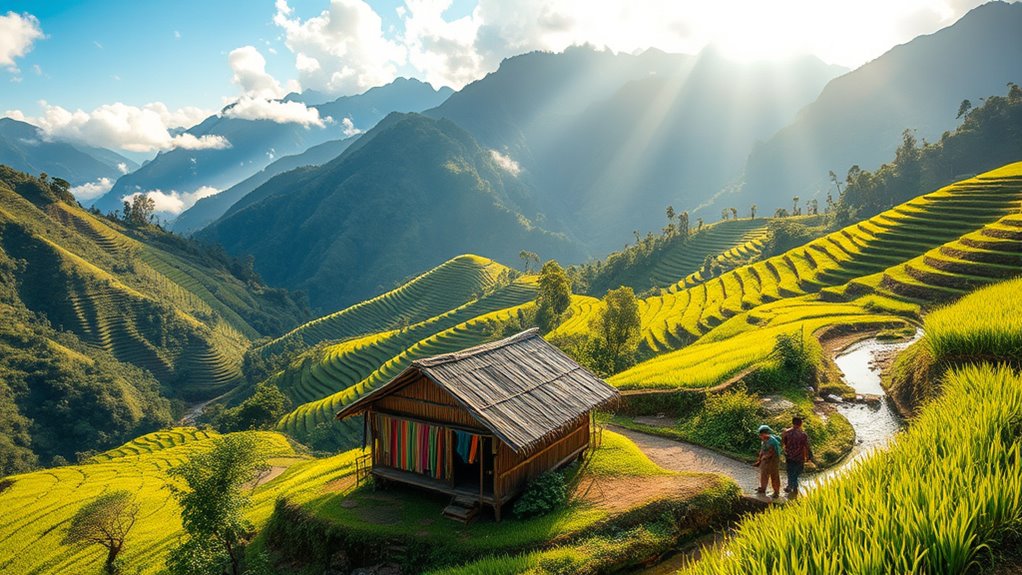To build a sustainable life in the Philippine mountains, you’ll want to find a clean, accessible location, ideally 40 minutes out of the city at a 3,000 ft elevation. Financially, aim for a debt-free lifestyle while considering land investment. Construct an eco-friendly home using local materials and create a garden for self-sufficiency. Embrace renewable energy and connect with your community for traditional practices. If you’re curious about more tips and strategies, there’s plenty to explore further.
Key Takeaways
- Identify a location with clean air and friendly locals, ideally near newly developed roads for better accessibility.
- Invest in land strategically, aiming for titled properties that ensure security and long-term value.
- Build an eco-friendly home using sustainable materials like bamboo and recycled wood to minimize your carbon footprint.
- Implement renewable energy systems, such as solar panels and rainwater collection, to promote self-sufficiency and reduce utility costs.
- Establish a garden for fresh produce and engage with the community to learn sustainable practices and share resources.
Finding the Perfect Location
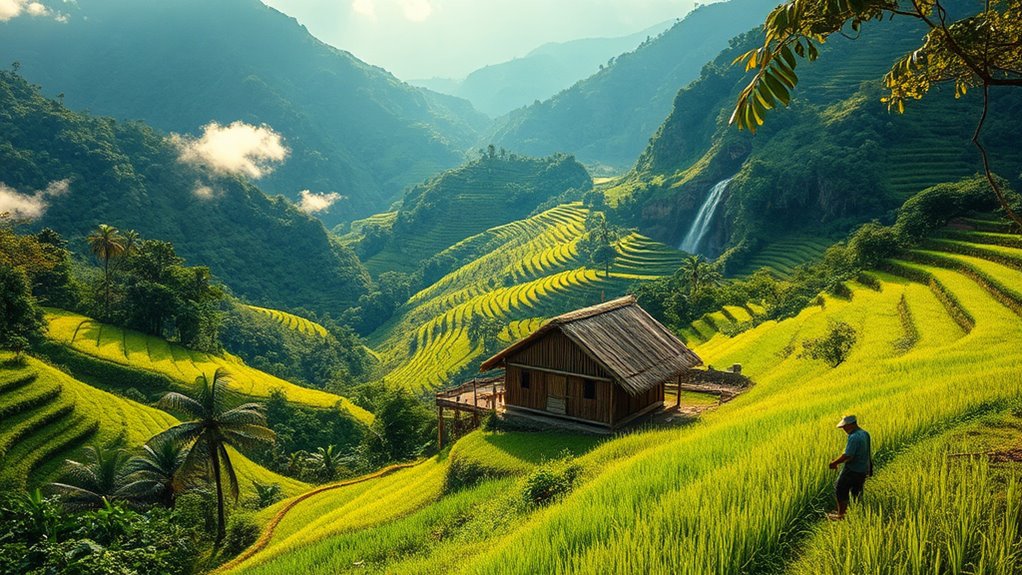
How do you find the perfect location for sustainable living? Start by exploring areas 40 minutes outside the city, where you’ll enjoy fresh air at an elevation of 3,000 ft.
Use tools like Google Earth to identify potential sites, then visit in person to eliminate options. Look for clean environments with friendly locals, like those near San Vincente Bai.
Accessibility is key, so prioritize locations close to newly developed roads. Guarantee you’re in a community that values sustainable practices, as this will enrich your living experience and enhance your connection to the land and the people around you. Additionally, research online for trustworthy insights that can guide you in making informed decisions about your sustainable living journey.
Financial Planning for a Sustainable Lifestyle
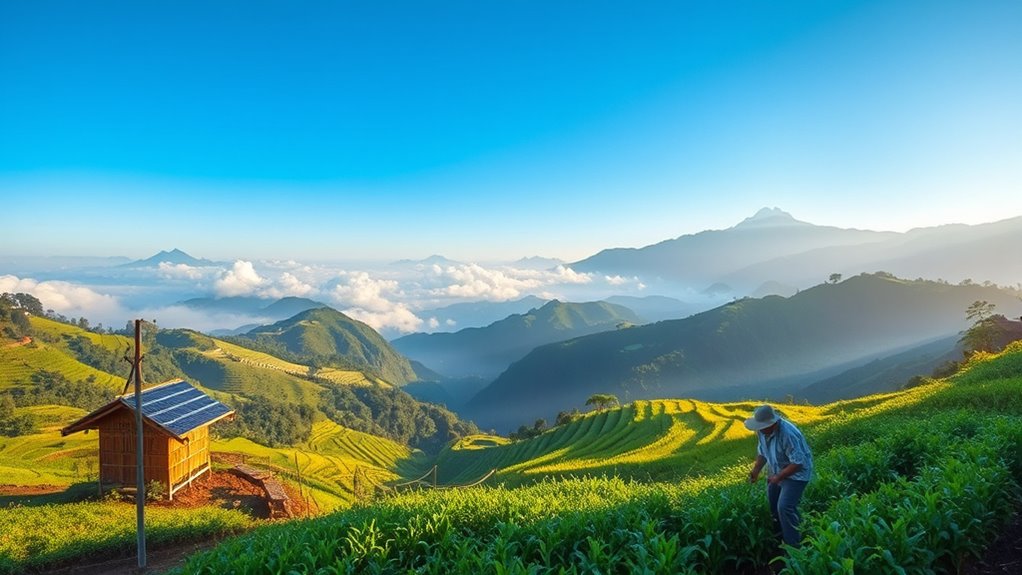
While starting on a sustainable lifestyle in the Philippines, it’s essential to have a solid financial plan in place.
Begin by evaluating your current assets and expenses, aiming for a debt-free life. Consider investing in land; two hectares can cost around $10,000, while titled land is about $18,000 per hectare.
Estimate your monthly living costs at approximately $2,000, factoring in essentials like food, healthcare, and utilities. Consolidate your resources wisely, and explore local markets for affordable goods.
With careful planning and smart investments, you can create a fulfilling and sustainable life in the Philippine mountains.
Construction of an Eco-Friendly Home
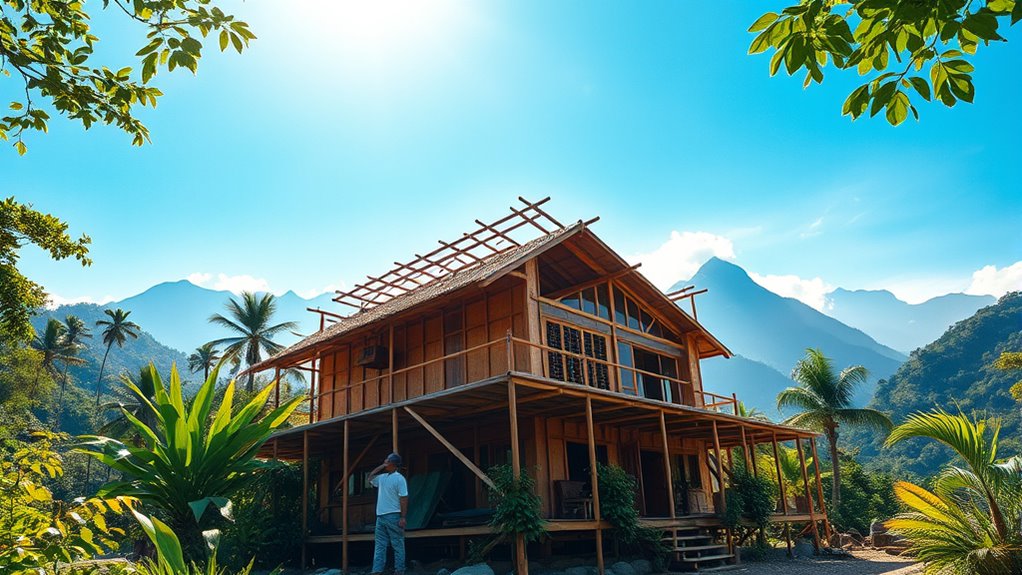
As you commence on constructing an eco-friendly home in the Philippine mountains, it’s important to focus on sustainable materials and design principles that minimize environmental impact.
Opt for locally sourced bamboo, recycled wood, and natural stone to reduce your carbon footprint. Consider passive solar design to maximize natural light and ventilation, lowering energy consumption.
Incorporate a rainwater collection system for irrigation and use solar panels to harness renewable energy. Design your home with open spaces for gardening and livestock, promoting self-sufficiency.
Embracing Sustainable Practices
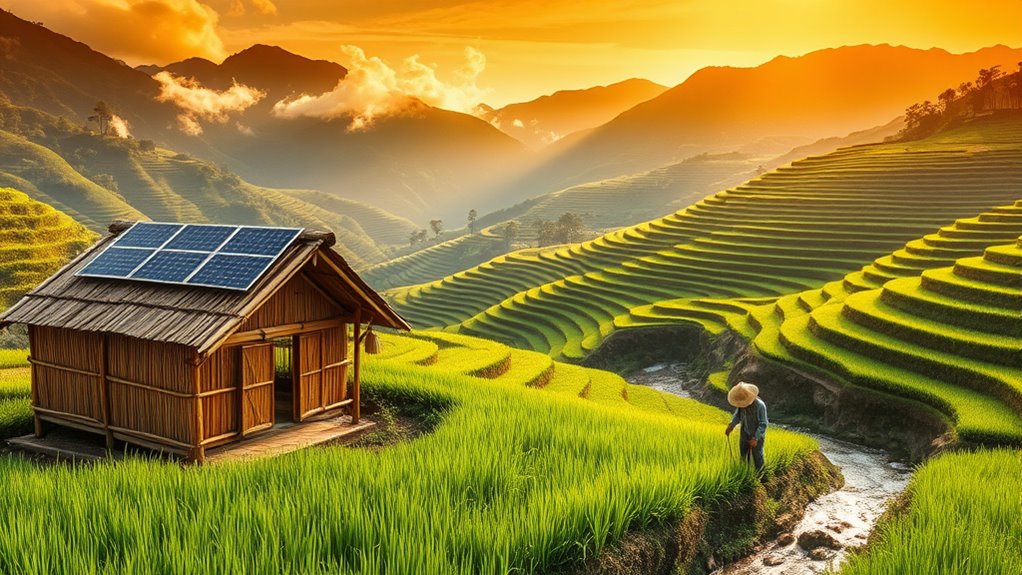
Building your eco-friendly home sets the stage for embracing sustainable practices that enhance your lifestyle in the Philippine mountains.
Start by utilizing renewable energy sources like a solar system, which can power your home efficiently. Consider using a battery-less solar inverter to reduce initial costs and ensure immediate energy use. Collect rainwater for irrigation and household use, ensuring you maximize resources. Incorporating elements of eco-friendly design can further improve your home’s sustainability. Additionally, consider implementing integrated pest management techniques in your garden to naturally control pests while promoting biodiversity.
Create a garden that produces fresh vegetables and herbs, reducing your reliance on store-bought goods. Consider raising livestock, like chickens or goats, for fresh eggs and milk.
Engage with your local community to learn traditional practices and share resources. Implementing curated lists of sustainable living ideas can help you easily adopt these small yet impactful changes that will lead to a more sustainable and fulfilling life in the mountains.
Navigating Healthcare in the Philippines
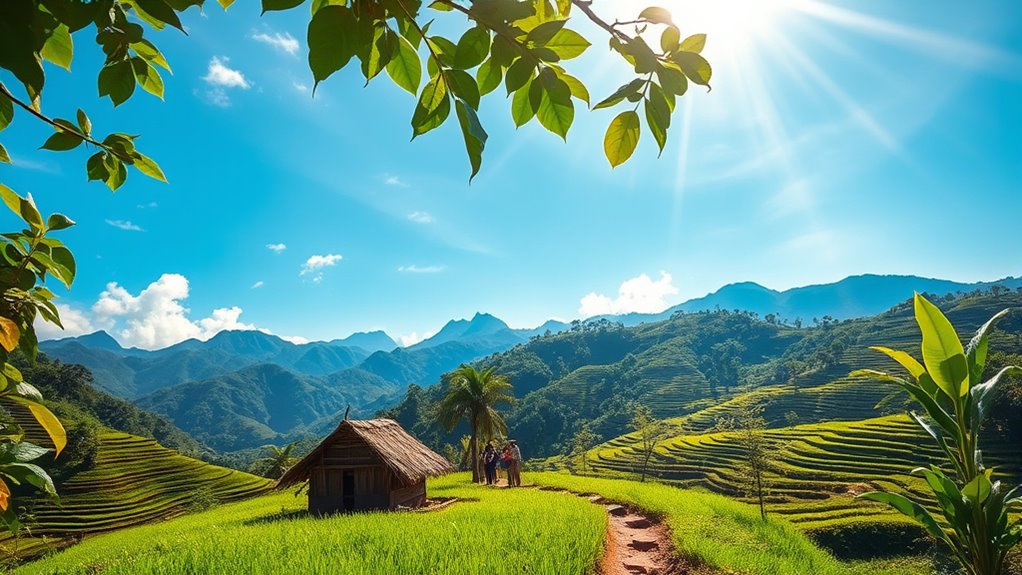
Maneuvering the healthcare system in the Philippines can be a straightforward process if you know what to expect.
First, familiarize yourself with local clinics and hospitals, as they vary in quality. You’ll find that many services are affordable; initial visits to specialists, like cardiologists, can cost around $9.
Don’t hesitate to seek care promptly, especially for emergencies. Keep in mind that follow-up care and medication are also reasonably priced.
Seek care without delay, especially in emergencies; follow-up treatments and medications remain affordable.
It’s wise to build relationships with healthcare providers, as this can enhance your experience. Overall, with a little preparation, you can receive excellent care while enjoying significant savings.
Adapting to Community Life

Charting healthcare in the Philippines offers a glimpse into the importance of community connections, which play a vital role in adapting to life in this serene mountain setting. You’ll find that engaging with locals fosters friendships and helps you navigate daily life. Shared meals and celebrations strengthen bonds, making you feel at home. Additionally, understanding the complex divorce law in the Philippines can be crucial for those navigating personal relationships in the community. Engaging with the community can also provide insights into political power couples that influence local governance and social initiatives.
| Community Activity | Benefits |
|---|---|
| Local Festivals | Builds camaraderie |
| Gardening Together | Shares resources and knowledge |
| Volunteering | Enhances community ties |
| Traditional Crafts | Preserves culture and skills |
Through these connections, you truly thrive in your new environment.
Future Plans for Homesteading Development
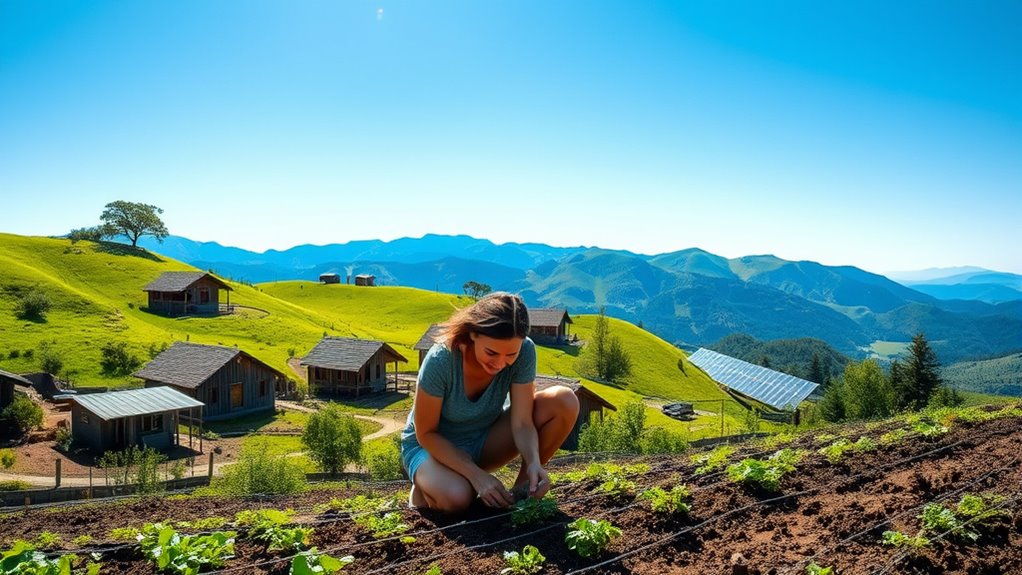
As you envision your future in the mountains, planning for homesteading development becomes essential to creating a self-sustaining lifestyle. You’ll focus on completing your home, integrating accessible features and a multi-purpose kitchen. Consider guest accommodations for friends and family, fostering connections within your community. Building a strong community support network can be invaluable in navigating challenges and sharing resources.
Incorporating universal design principles into your home can enhance accessibility for all visitors. You’ll cultivate a garden, raise livestock, and install a solar system to reduce energy costs. Backyard greenhouses can also help maximize your gardening efforts by providing a controlled environment for plant growth. Rainwater collection will support irrigation, while deep litter systems and vermiculture will enhance soil fertility. Additionally, implementing a backyard greenhouse can extend your growing season and provide fresh produce year-round.
Frequently Asked Questions
What Are the Best Crops to Grow in the Philippine Mountains?
When considering the best crops to grow in the Philippine mountains, you’ll want to focus on those that thrive in cooler climates and well-drained soil.
Vegetables like lettuce, beans, and carrots work well, along with root crops such as sweet potatoes and taro.
You might also consider herbs like basil and mint, as they flourish in these conditions.
Additionally, fruit trees like avocado and citrus can provide long-term yields for your homestead.
How Do I Find Reliable Local Contractors for Construction?
To find reliable local contractors for construction, start by asking for recommendations from locals and neighbors.
Visit completed projects to assess quality firsthand.
Utilize social media platforms and local community groups to gather reviews and feedback.
Don’t hesitate to interview potential contractors, discussing your project openly and checking references.
Comparing quotes from several contractors will help you identify the best fit for your needs and budget.
Always trust your instincts during the selection process.
What Wildlife Should I Be Cautious of in the Area?
When you explore your new area, you might unexpectedly encounter wildlife that requires caution.
Snakes, including venomous species, could be lurking near your property, especially in dense vegetation.
Monitor your surroundings for monitor lizards and wild boars, as they can be unpredictable.
It’s important to respect their space while understanding local ecosystems.
Are There Any Local Regulations for Livestock Ownership?
When considering livestock ownership, you’ll need to check local regulations, as they can vary widely.
You should inquire about permits, zoning laws, and any restrictions on specific animals.
It’s also wise to connect with local farmers or agricultural departments; they can provide insights and guidance.
Following local guidelines not only guarantees your compliance but also promotes good relationships within the community, creating a more harmonious environment for your new venture.
How Can I Access the Internet in Remote Locations?
You might think accessing the internet in remote locations is impossible, but it’s easier than you think!
You can start by looking into mobile data plans from local providers, as many offer coverage even in less populated areas.
Satellite internet is another option, providing reliable access.
If you’re near a town, consider café Wi-Fi, too.
With a little research, you’ll stay connected without sacrificing your peaceful surroundings.
Conclusion
As you commence on this journey to build a sustainable life in the Philippine mountains, remember that every choice you make shapes your future. By embracing eco-friendly practices and fostering community connections, you’re not just creating a home; you’re nurturing a lifestyle that reflects your values. Isn’t it time to prioritize your well-being and the planet’s health? With each step, you’re not only transforming your surroundings but also inspiring those around you to join in this beautiful endeavor.
